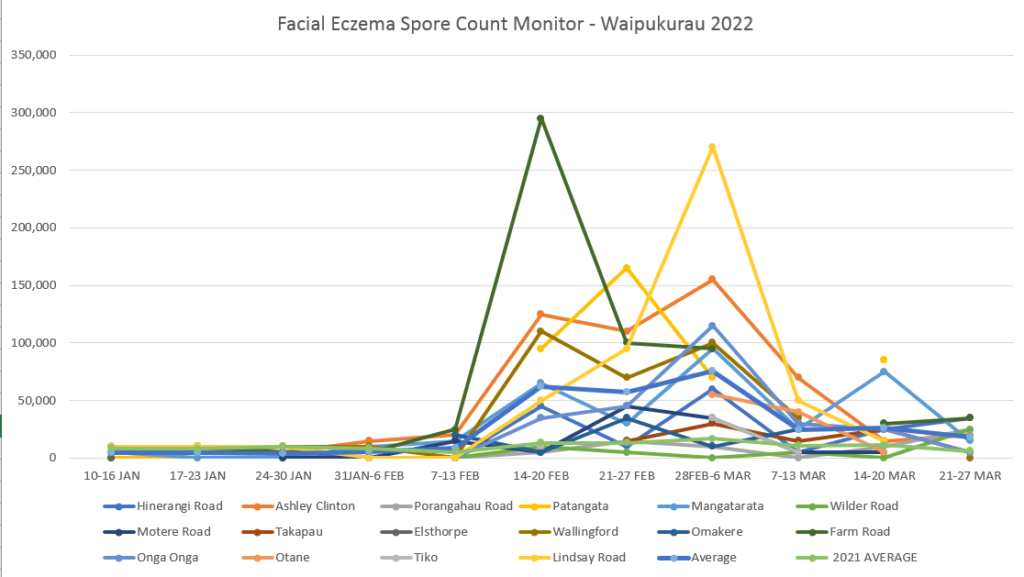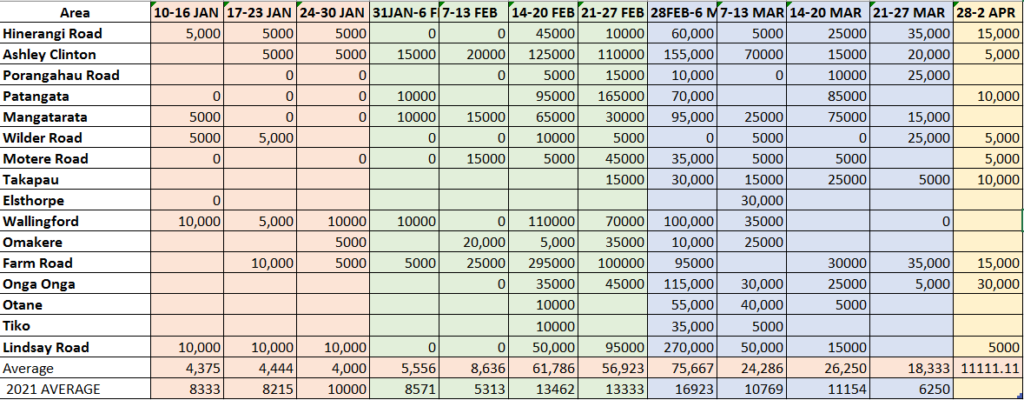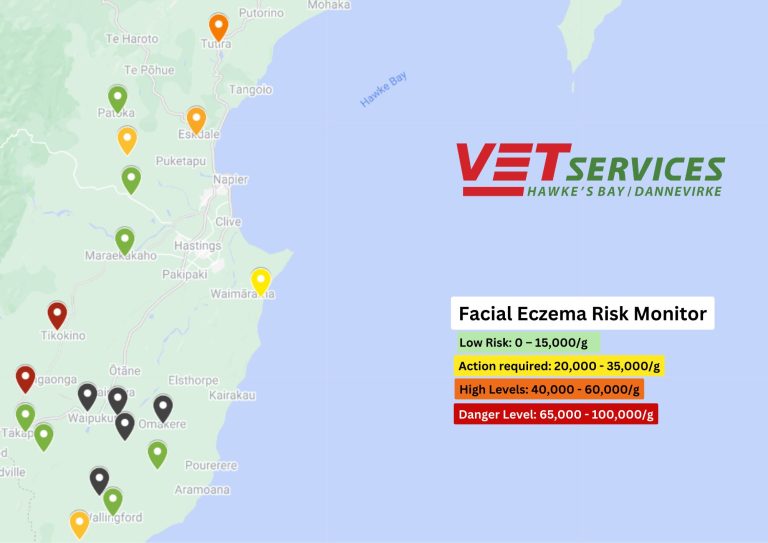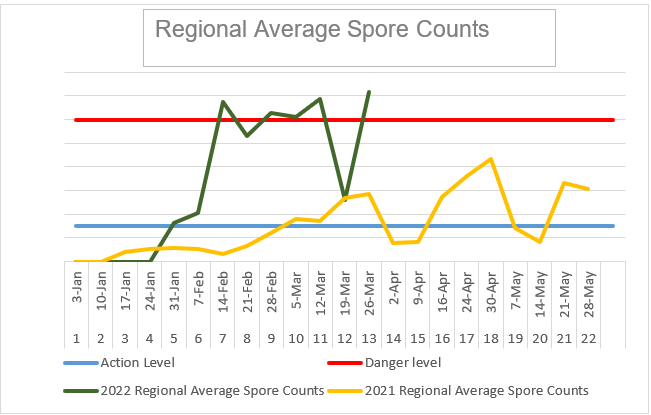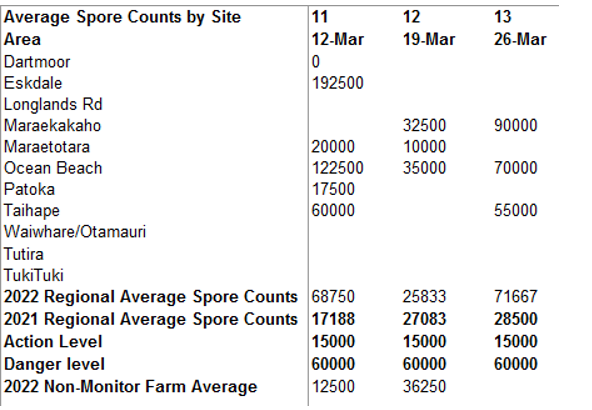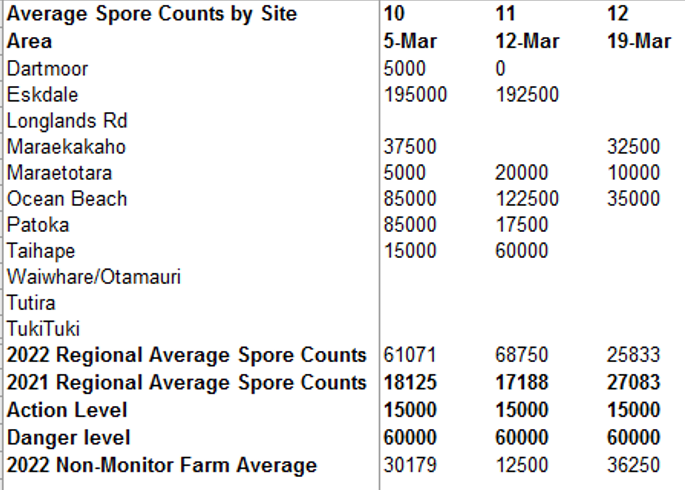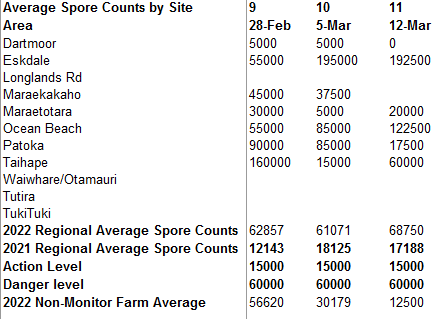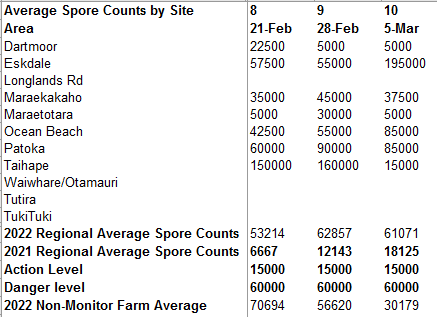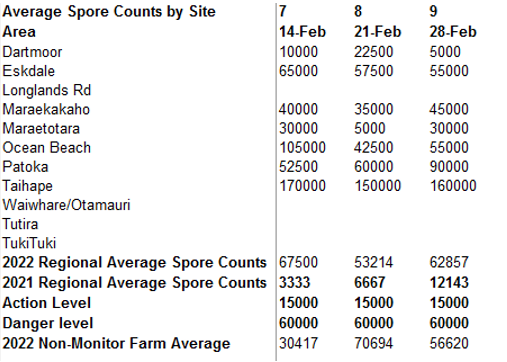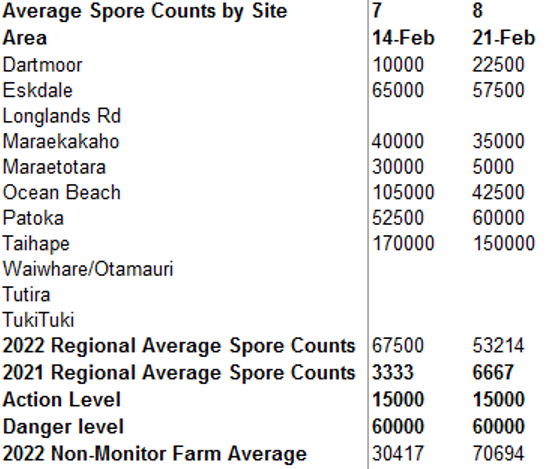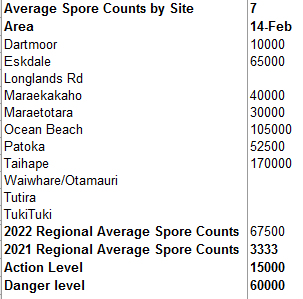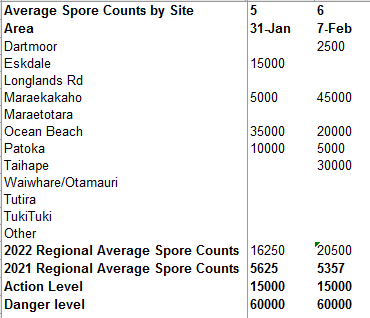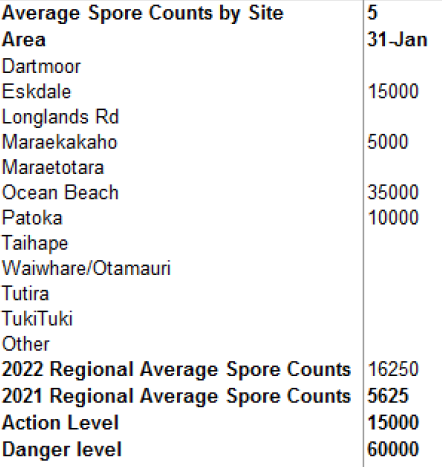Facial Eczema Risk Monitor
Vet Services weekly summary of spore counts monitoring the facial eczema risk to stock across the region


02 May 2024
Still some concerning levels across the region.
Counts over 30,000 cause damage if ongoing exposure. It’s a good idea to keep monitoring paddocks and bringing in samples to check where your farm is at.
______________________________________________________________
11 April 2024
Wide variation in spore counts this week and some concerning levels.
Counts over 30,000 can cause damage if ongoing exposure and monitoring paddocks is a good idea to see where your farm is at. Hopefully some rain arrives over the weekend and drops counts again but if we continue to have settled weather may need to make a plan for the next few weeks.
______________________________________________________________
19 March 2024
Cool nights and wet weather has been keeping spore counts on the low side but as you can see they are starting to creep up.
We want to remind farmers that prevention is by far the best option. Treating rams and ewes with zinc capsules to protect them in case spore counts rise during the mating period, will help prevent a poor scanning performance.
Please keep an eye on our website for the latest results and to find the link to our monitor map.
______________________________________________________________
01 March 2024
Spore counts this week have been variable, ranging from zero to 55,000 at Mangatarata.
Remember that spore counts of 40,000 and above are considered dangerous but there can be considerable variation between farms and even paddocks. If warm, wet weather continues we can expect that spore counts will continue to rise. It may be time to consider a zinc bolus to avoid any issues mid tupping.
Make sure you review options for managing facial eczema and contact us if you have any questions.
________________________________________________________________
09.02.24
Some mild counts this week but should still be low risk at this stage. With some cooler nights this week and a bit more rain around spores won’t have had a lot of growth this week however there is still risk with the large amount of dry matter around.
Continue to monitor the trend in the next few weeks and give the clinic a call if you have specific concerns.
________________________________________________________________
01.02.24
We are getting back into the swing of monitoring spore counts, we’d like to thank our monitor farms for making the effort to bring in samples this week.
The facial eczema spore count this week have been on the lower side. Some slight risk in Maraekakaho and low risk for Patoka. The average for the region is 5000. This week’s hot spot was in Patoka at 25000.
The wet weather does not seem to be letting up yet, but night time temperatures are warm enough for spores to grow and farmers should assess their risk individually and prepare preventative measures accordingly.
Please feel free to drop pasture samples off at the clinic if you are concerned, it is $28.90 per sample and the average turnaround time for results is 1-3 days.
________________________________________________________
26.1.24
Very low spore counts this week after thunderstorms
washing those spores lower into the sward. Worth watching over the next few weeks to see if warm weather causes lots of growth. Continue to monitor any paddocks of concern.
________________________________________________________
19.1.24
First week of samples for 2024 are all looking on the low side. Depending where in the district some may have got some heavy thunderstorms this week washing those spores lower into the sward, but watch for the next few weeks if these warm nights continue. If you are concerned about any paddocks consider testing prior to grazing and contact the clinic to make a preventative plan if necessary.
It's estimated facial eczema costs the industry around $200m annually
with animals suffering from liver and skin damage which contributes to ill-thrift, reduced fertifility, and reduced milk and meat production.
Prevention with careful planning and implementing a good management plan is the only method to avoid Facial Eczema (FE).
We need to be using zinc treatment 2-3 weeks before the spore growth is in the danger zone for maximum protection.
Being pro-active is key – start spore counting early!
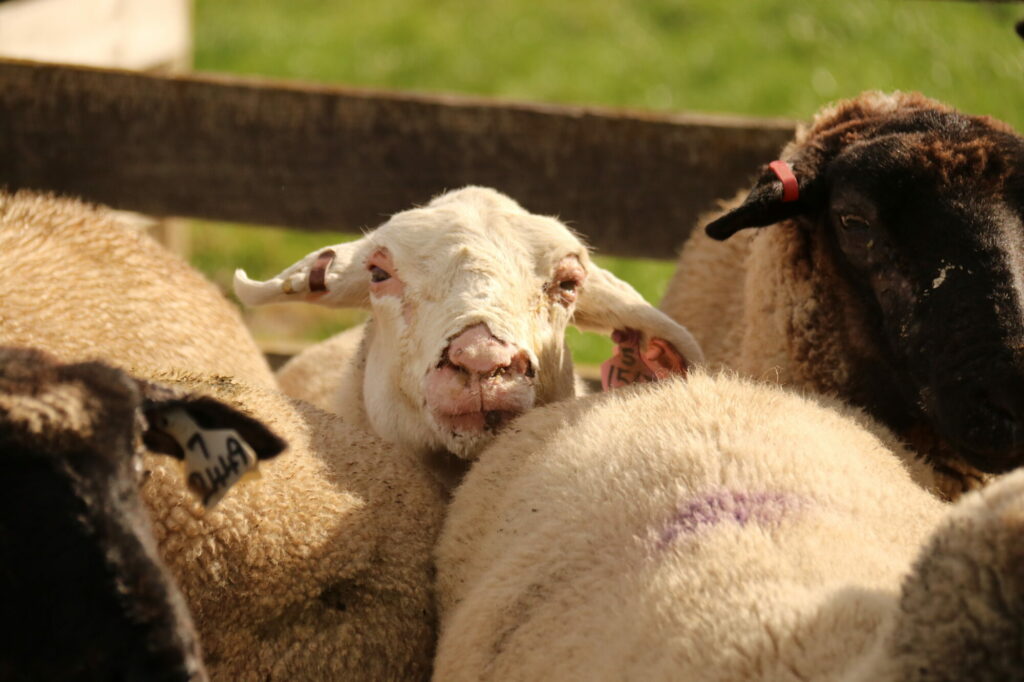
|  | |||||||||||
Collecting a pasture sample
|
 |
Facial Eczema Risk Monitor 2023
No results over 15,000 across the region this week (17-23 April).
Facial Eczema Spore count monitoring has now finished for the season. We would like to thank our monitor farms for collecting weekly samples and for their contribution to this data.
If you have any concerns or would like to continue monitoring the risk in your area please get in touch with your local clinic.
2023 Season Results from Waipukurau Monitor Farms

2023 Season Results from Hastings Monitor Farms
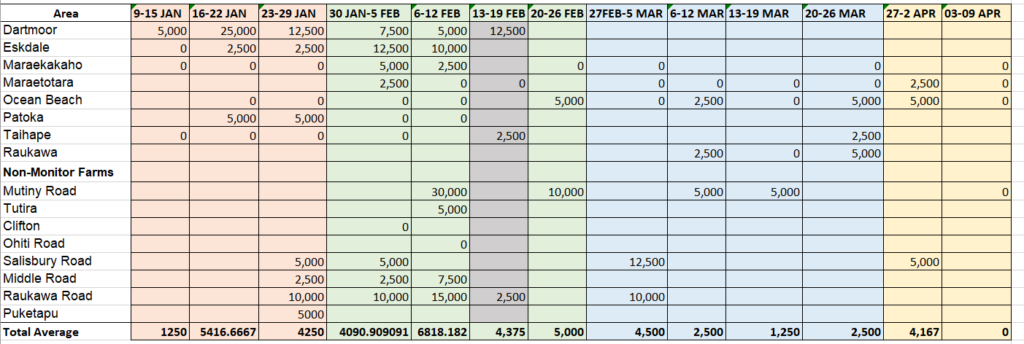
Facial Eczema Risk Monitor 2022
